Where boats do not sail, but weave a thousand stories
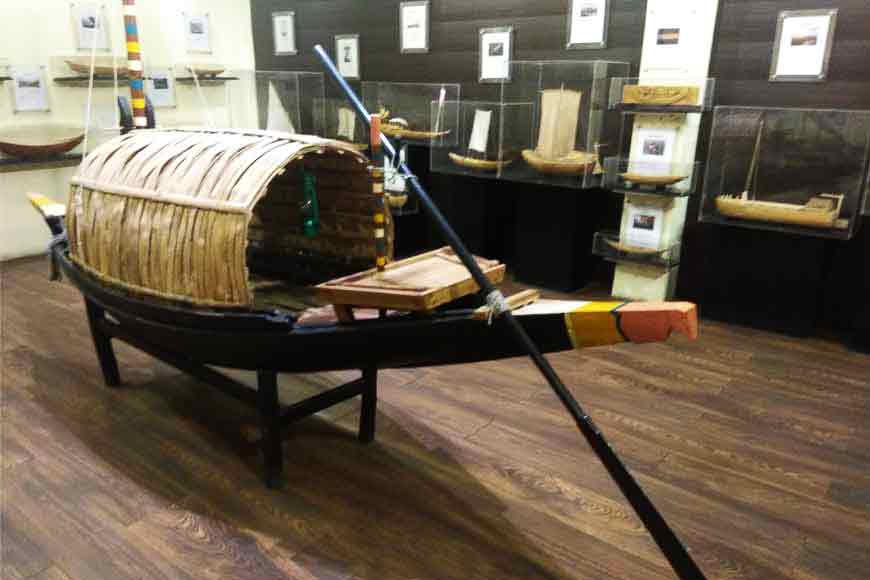
Hawa lagey gaaner paley / Majhi amaar bosho haaley (The breeze makes the song-sails flutter / O boatman, be on the radar). None other than Rabindranath Tagore felt the charm of being on a boat for days, sailing on a river. His annual boat trips at Silaidaha in Bangladesh, spending days on a moored or sailing boat on the Padma, made him express subtly a melancholy associated with rivers and boats in many of his writings. River Padma is a distant dream today for many of us and so is the Hooghly or Ganga, thanks to our hectic life and geographical boundaries. But that doesn’t take away our yearning to be with the flowing river atop a solitary boat! To satisfy that need to be close to your dream sails, you can always drop in at the Boat Museum of Kolkata, a rare and hidden gem, at Ambedkar Bhavan in Salt Lake.
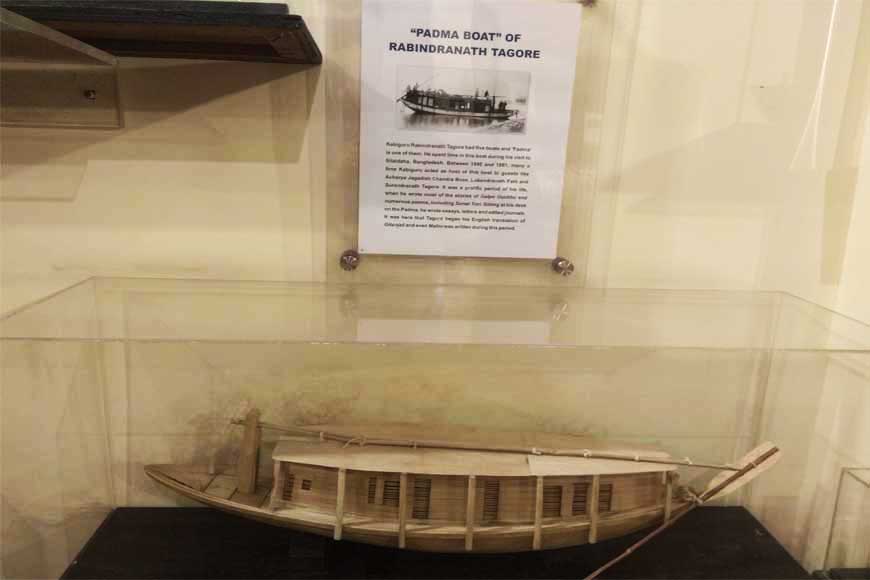 Padma Boat
Padma Boat
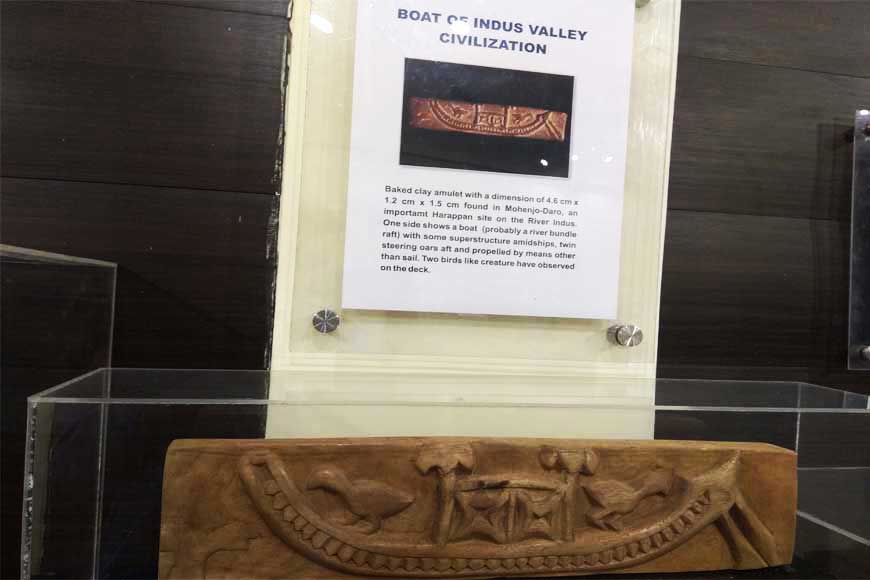 Boat of Indus Valley civilization
Boat of Indus Valley civilization
Several ancient texts have mentioned Bengal as the ‘Land of Maritime Valour.’ A significant portion of this land’s history and heritage is centred on boats and rivers. From music to folklores to paintings, boats have always been a principal subject through passage of time. And you can be a part of that ‘lost time,’ while visiting this museum. Entering the building, you are almost immediately greeted to a life-size boat with a lantern hanging from its bulging roof in a colourful sway. The whole room is adorned with varieties of miniature boat models displayed in comely lighting. From fishing boats to cargo ships to ‘promod toroni’ (boats used by zamindars and nawabs for their leisure travels) to passenger ferries --- a wide range will make you realise how once upon a time boats were a part and parcel of Bengal’s rural life.
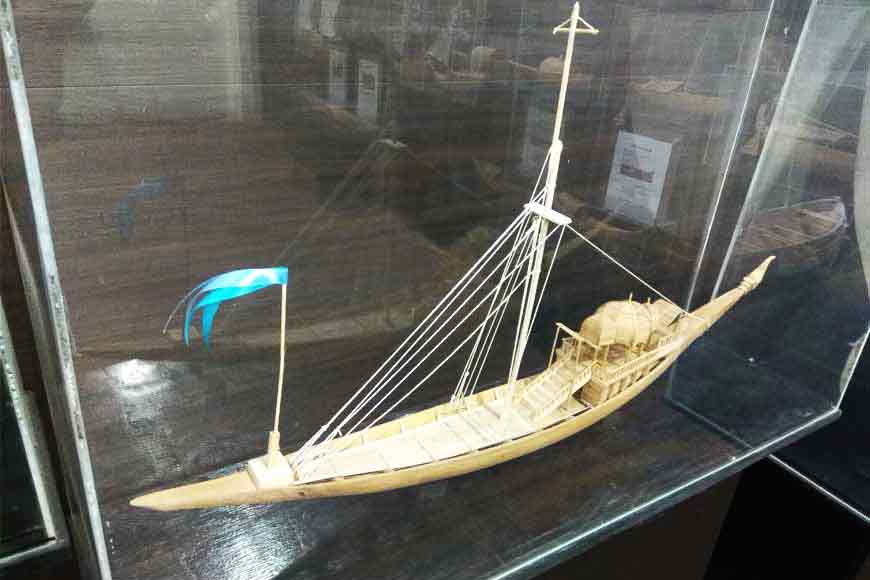 Feal-Chara
Feal-Chara
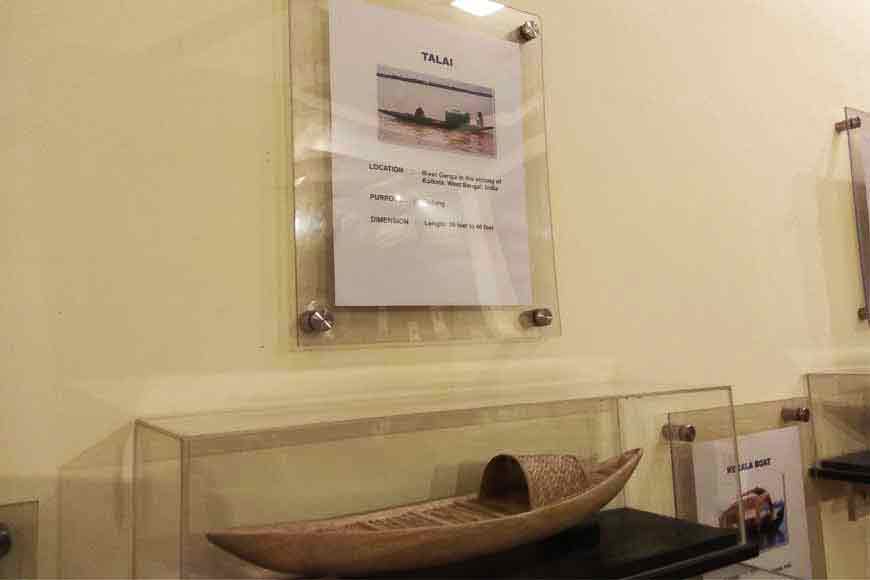 Talai
Talai
Boats also tell silent stories. Take for example the famous ‘Padma Boat’ of Rabindranath Tagore, the one on which he spent a lot of time between 1890-91. This is the boat that was probably witness to days when Tagore created words, weaving them to some of the most emotional poems or wrote letters to his near and dear ones. Nothing but the quiet splash of the oars, songs of Muslim boatmen and the boat itself gave him company. Another important model on display in this museum is the ‘Kheya Nouka’ or simply ‘Kheya,’ one of the most popular boats of Bengal, often seen ferrying passengers and goods. While the sleek ‘Chhip Nouka’, that can reach a length of 75 feet, is still used for boat races during local festivals, particularly in districts of Murshidabad. The ‘Moor-Punkee’ or ‘Mayur-Pankhi’ was an exclusive boat meant only for the elite. It got its name from the design of its hull, that resembles a peacock’s neck. The museum has a rare etching of a Mayur Pankhi by French artist F.B. Solvyns.
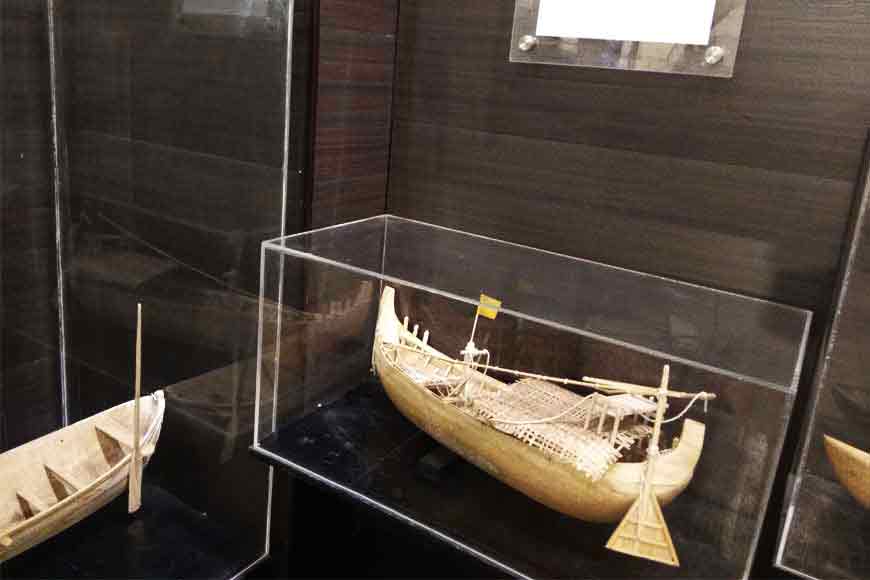 Patia
Patia
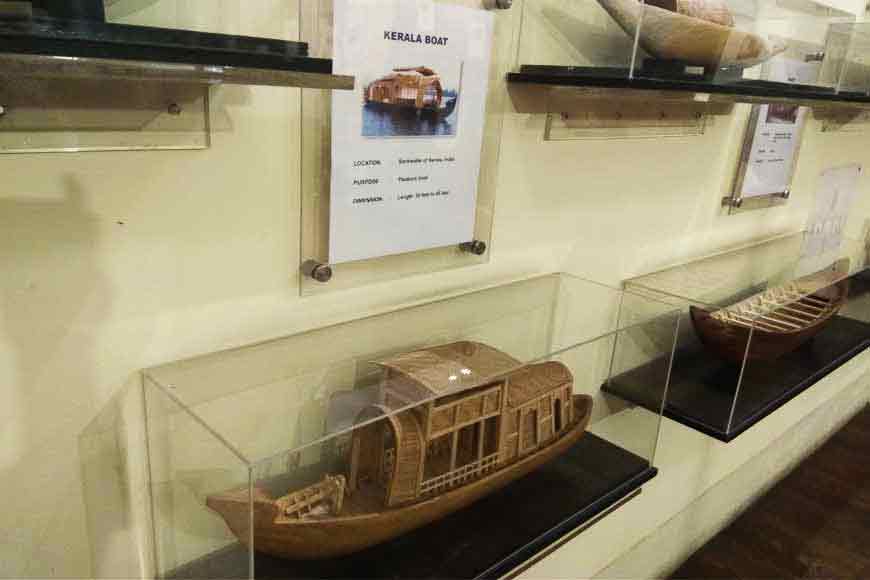 Kerala Boat
Kerala Boat
Shampa Chanda Sinha, who guided us through the museum, further explained the significance of various boats that mainly have their origins in and around Bengal. She drew our attention to an invaluable baked clay amulet, belonging to Indus Valley Civilization. Found in Mohenjo-Daro, it shows a detailed inscription of a boat, with twin steering oars and a propeller, and seemingly two birds on its deck. Dr Prosenjit Deb Barman, the Director of Cultural Research Institute, was kind enough to explain how and when these innumerable boats came into existence and who built the models so meticulously.
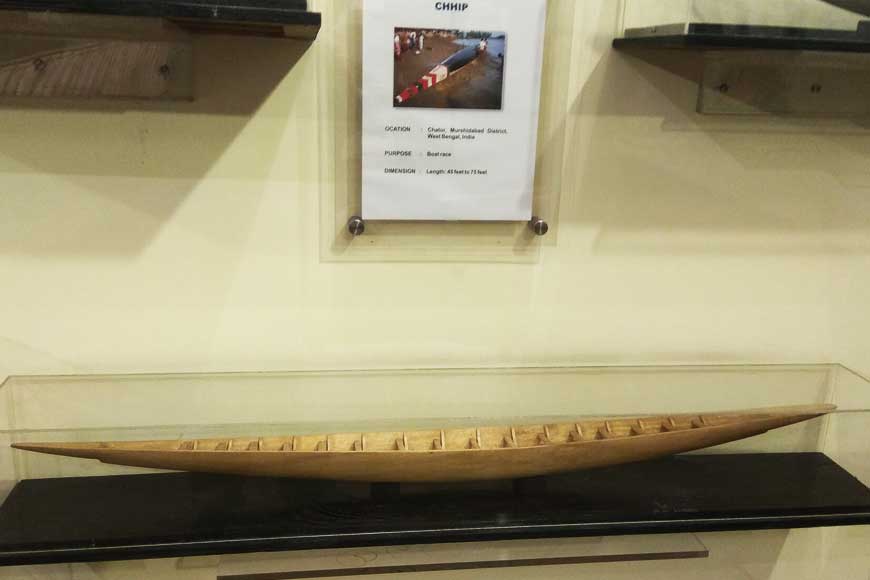 Chhip
Chhip
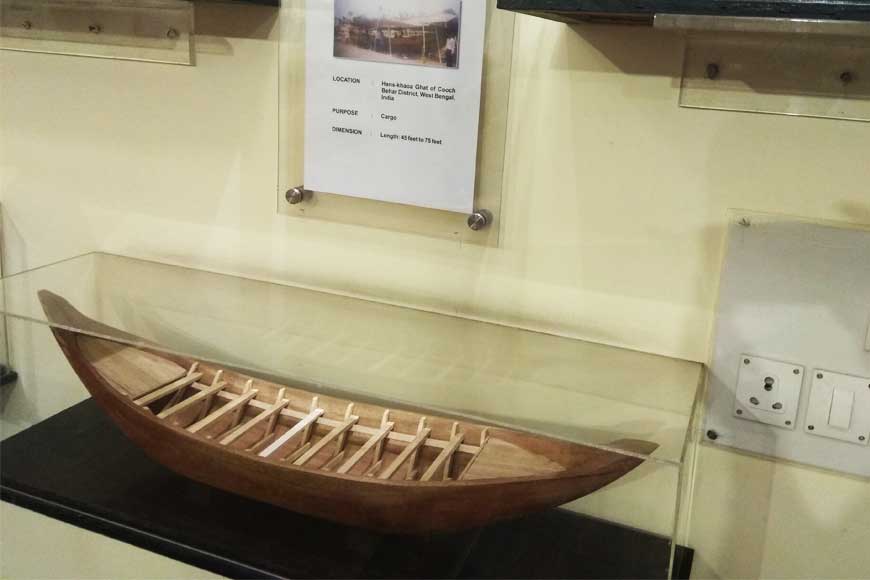 Chhot
Chhot
Top craftsmen from Dinajpur worked day and night to create the exact simulation of the models. The whole project was supported by the Backward Classes Welfare Department of West Bengal Government. As I left my boat journey at the Boat Museum and sailed back to the crowds on city streets, a haunting song kept returning to my memory: Amay Dubaili Re Amay Bhashaili Re! If you are interested to drown yourself in the world of boats, do not forget to drop in at Kolkata’s Boat Museum.
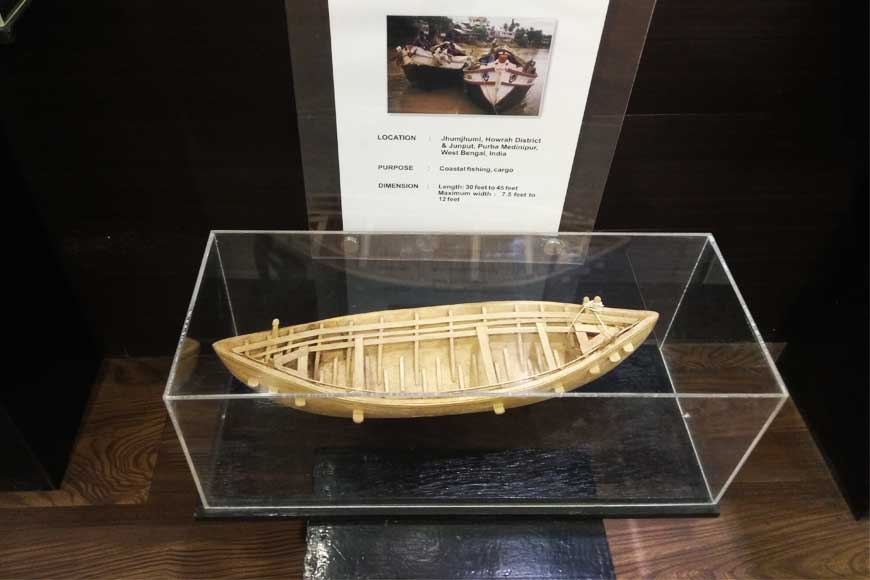 Pansi
Pansi
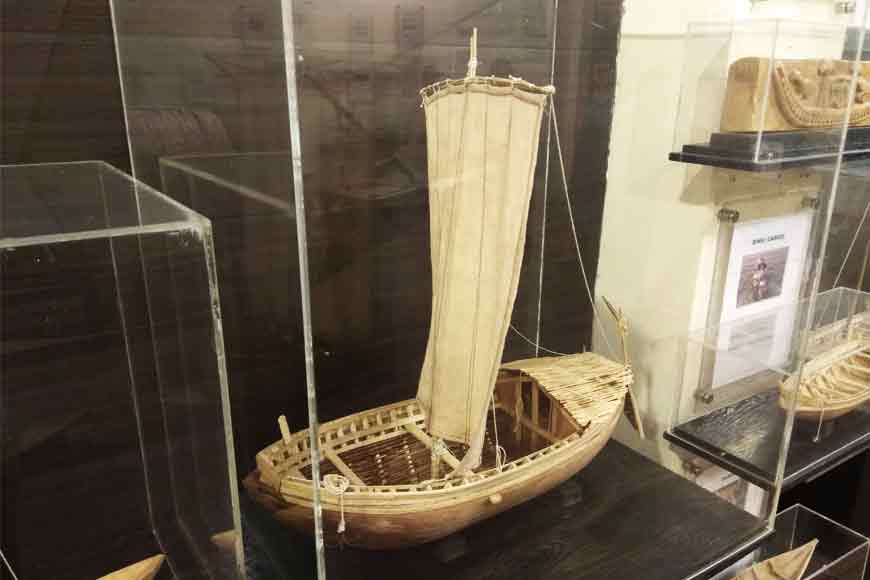 Pinnace
Pinnace










